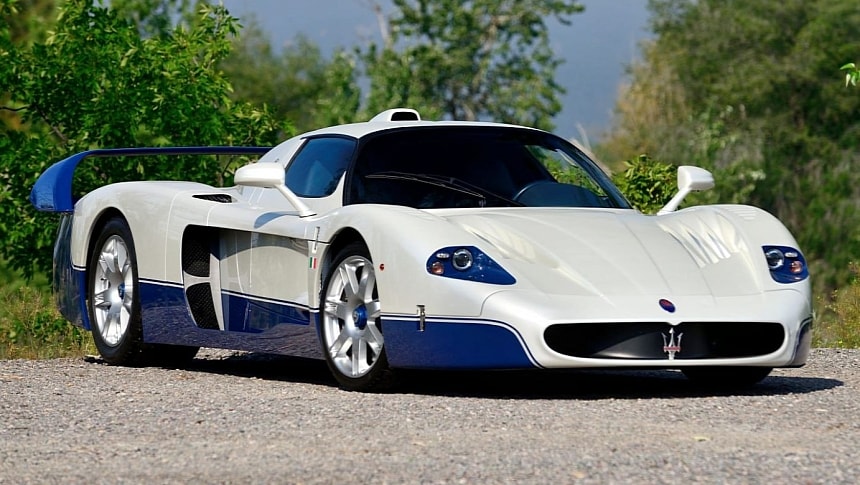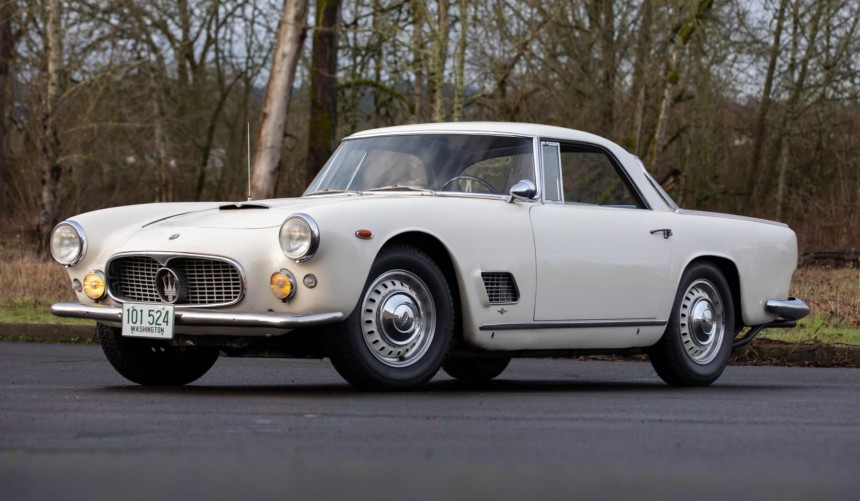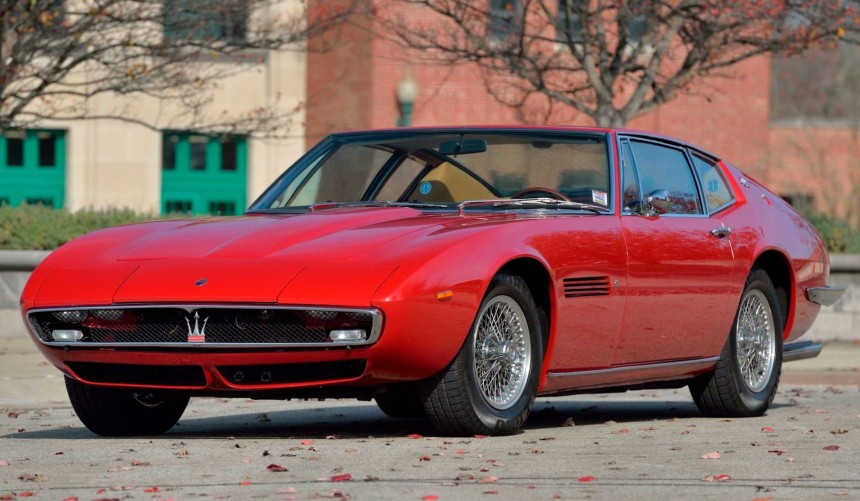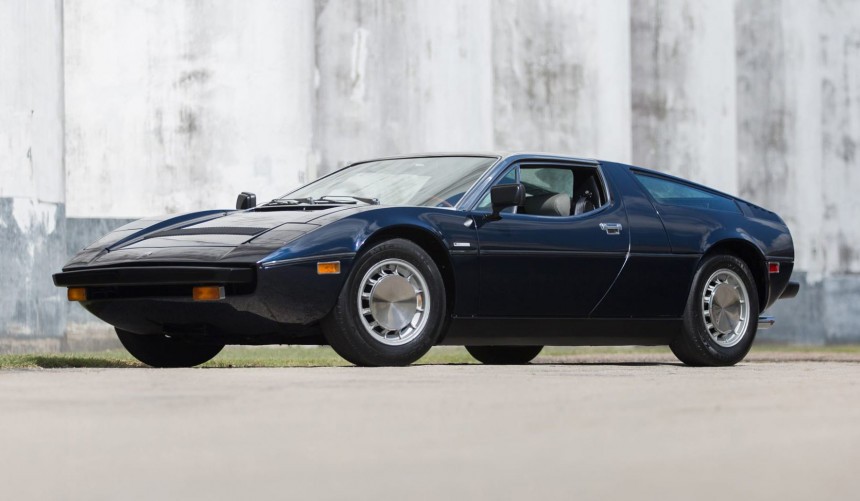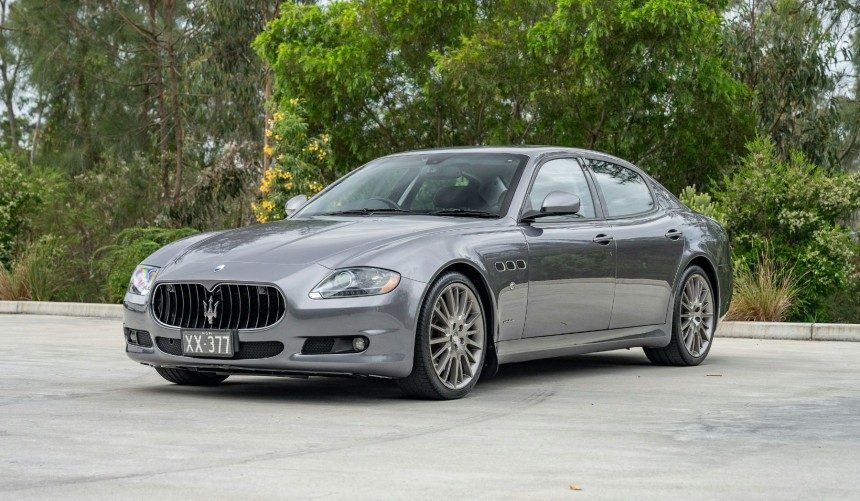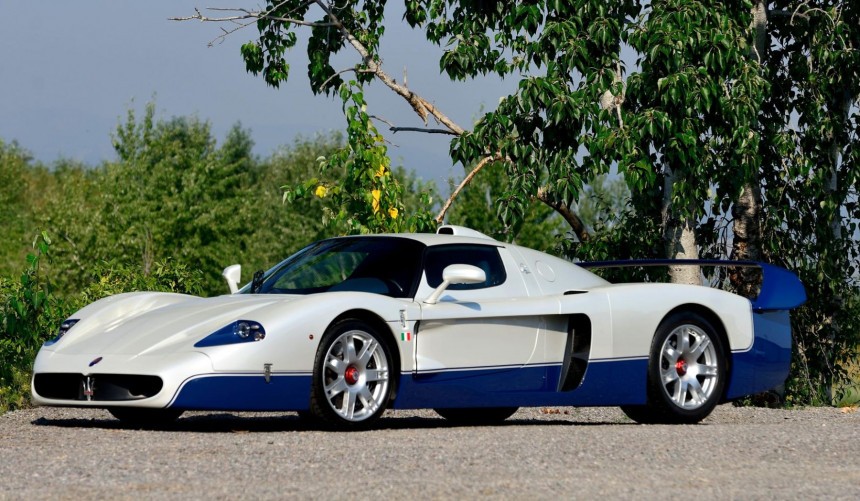For more than a century, Maserati has produced many intriguing road cars. Some have become automotive icons, but others have been unfairly underrated and forgotten.
Founded in December 1914 by the Maserati brothers, the company began making a name for itself in motorsport.
By 1947, in order to finance its motorsport endeavors, Maserati started producing road cars and launched the A6, a gorgeous grand tourer designed by Pinin Farina.
Although the carmaker had undergone several rough patches in the following decades, it survived and delivered a series of memorable models.
By the mid-1950s, Maserati had produced several great grand tourers, but the production figures were low as the company concentrated most of its efforts on its motorsport programs - mainly Formula 1.
Aiming to create a new road car that could fare better on the market, Maserati developed the 3500 GT and unveiled it at the 1957 Geneva Motor Show.
Donning a beautiful aluminum body coachbuilt by Carrozzeria Touring, the 2+2 coupe became an instant hit among luxury grand tourer enthusiasts.
Production started later that year and ended in 1964. With 2,226 units (including 245 Vignale-designed Spyders) leaving the Modena factory, the 3500 GT became Maserati's best-selling road car.
Not only was it one of the most elegant Italian GTs of its era, but it was also one of the most potent thanks to the 3.5-liter Tipo 101, an all-aluminum DOHC inline-six based on the 350S race car's unit.
Initially, the engine delivered 217 hp courtesy of three twin-choke 42 DCOE Weber carbs. From 1960 onwards, it received a Lucas mechanical fuel injection, which helped boost output to 232 hp.
Six decades after the last unit left the factory, the 3500 GT remains one of the greatest road cars to don Maserati badges.
After the 3500 GT, the Italian carmaker continued to develop spectacular grand tourers and began switching to V8 power.
The culmination of Maserati's early V8-powered GT project was the Ghibli, a new flagship model that debuted at the 1966 Turin Motor Show.
Designed by a young Giorgetto Giugiaro, who, at the time, was working for Carrozzeria Ghia, the Ghibli initially featured a gorgeous fastback coupe body that was both elegant and aggressive.
A convertible version was introduced in 1969, but, as with the 3500 GT, the vast majority of Ghiblis were sold in coupe guise.
Regardless of the body style, the car was powered by a quad-cam 4.7-liter V8 engine coupled to either a standard five-speed manual or an optional three-speed automatic.
Codenamed Tipo AM 115, the engine was rated at 306 hp. In 1969, an SS version joined the Ghibli range, and with it came a larger 4.9-liter that made 330 hp.
The Ghibli was produced from 1967 to 1973 in 1,295 units (1,170 coupes and 125 Spyders) and became one of the most iconic grand tourers of its era.
By the late 1960s, Italian manufacturers began developing mid-engine road cars .
Lamborghini unleashed the iconic Miura, DeTomaso introduced the Mangusta, and Ferrari was also working on a mid-engine sports car of its own, so Maserati decided to join the club.
Following the successful collaboration with Giorgetto Giugiaro that led to the Ghibli, the carmaker employed the now-in-vouge stylist to design its new model.
Called Bora, the first-ever mid-engine Maserati was unveiled at the Geneva Motor Show in the spring of 1971 and went into production several months later.
Originally, the EU-spec Bora was powered by a high-revving 306-hp version of the Tipo AM 107 V8, while the US-bound cars featured a 4.9-liter to achieve 280 hp and comply with the stricter emission regulations.
In 1976, the European Bora also received the 4.9-liter, but with a higher compression ratio, allowing it to produce 325 hp.
With innovative features like a pedal cluster that could be adjusted with the touch of a button, a tilting and telescoping steering column, or a full-size "frunk," the Bora was much more practical than its competitors.
Nevertheless, Maserati only managed to sell 564 Boras during its seven-year production run, mainly because of the 1973 oil crisis and its aftermath.
One of the most impressive modern Maseratis was the fifth-generation Quattroporte (four-door, in Italian) introduced in 2003.
A luxurious four-door sports sedan with grand tourer vibes, the Quattroporte was built around an all-new platform and featured a beautiful body designed by Pininfarina's Ken Okuyama.
The model was available in several versions, with the most impressive being the Sport GT S. As the name implies, the model that debuted at the 2007 Frankfurt Motor Show as a 2008 model year offering was the sportiest version of the Quattroporte lineup.
It ditched the smooth Skyhook adaptive suspension for a high-performance system with Bilstein shocks, which lowered the ride height and resulted in crisper handling. Moreover, the Sport GT S received several visual upgrades, larger brakes, and an Alcantara-trimmed interior.
Initially, it was powered by the same 395-hp 4.2-liter "Ferrari-Maserati" F136 naturally-aspirated V8 as the rest of the Quattroporte lineup.
However, the facelifted Sport GT S introduced in 2009 was available with the most potent version of the enlarged 4.7-liter version of the same engine, rated at 444 hp.
Though the current six-generation Quattroporte brought more power and refreshed styling, the 2008-2012 Sport GT S remains one of the most impressive modern Maseratis and, for many of the brand's enthusiasts, it's the greatest Quattroporte ever built.
When Ferrari introduced its new flagship sports car in 2002 and named it after the company's founder, it was clear that this was the ultimate Ferrari.
Though a track-oriented version was subsequently produced (the FXX), Ferrari had no intention to enter the Enzo in motorsport competitions.
In the meantime, Maserati wanted to make a motorsport comeback and ended up using the Enzo as the building block for its new GT1 challenger.
Dubbed MC12, the breathtaking supercar used the Enzo's chassis, engine, gearbox, and windshield, but everything else was designed from scratch by Frank Stephenson.
Of course, to homologate a race car for the FIA GT1 class, a limited run of road-legal units had to be produced.
Powered by a slightly modified version of the Enzo's 6.0-liter V12 rated at 621 hp, the road-going MC12 was produced in 50 units and became the greatest road car ever developed by Maserati.
Its race version, dubbed MC12 GT1, debuted in 2004, and from the 2005 season, it went on to win the FIA GT Championship (and the FIA GT1 World Championship) every year until it retired in 2011.
By 1947, in order to finance its motorsport endeavors, Maserati started producing road cars and launched the A6, a gorgeous grand tourer designed by Pinin Farina.
Although the carmaker had undergone several rough patches in the following decades, it survived and delivered a series of memorable models.
Maserati 3500 GT
Aiming to create a new road car that could fare better on the market, Maserati developed the 3500 GT and unveiled it at the 1957 Geneva Motor Show.
Donning a beautiful aluminum body coachbuilt by Carrozzeria Touring, the 2+2 coupe became an instant hit among luxury grand tourer enthusiasts.
Production started later that year and ended in 1964. With 2,226 units (including 245 Vignale-designed Spyders) leaving the Modena factory, the 3500 GT became Maserati's best-selling road car.
Not only was it one of the most elegant Italian GTs of its era, but it was also one of the most potent thanks to the 3.5-liter Tipo 101, an all-aluminum DOHC inline-six based on the 350S race car's unit.
Initially, the engine delivered 217 hp courtesy of three twin-choke 42 DCOE Weber carbs. From 1960 onwards, it received a Lucas mechanical fuel injection, which helped boost output to 232 hp.
Six decades after the last unit left the factory, the 3500 GT remains one of the greatest road cars to don Maserati badges.
Maserati Ghibli (AM115)
The culmination of Maserati's early V8-powered GT project was the Ghibli, a new flagship model that debuted at the 1966 Turin Motor Show.
Designed by a young Giorgetto Giugiaro, who, at the time, was working for Carrozzeria Ghia, the Ghibli initially featured a gorgeous fastback coupe body that was both elegant and aggressive.
A convertible version was introduced in 1969, but, as with the 3500 GT, the vast majority of Ghiblis were sold in coupe guise.
Regardless of the body style, the car was powered by a quad-cam 4.7-liter V8 engine coupled to either a standard five-speed manual or an optional three-speed automatic.
Codenamed Tipo AM 115, the engine was rated at 306 hp. In 1969, an SS version joined the Ghibli range, and with it came a larger 4.9-liter that made 330 hp.
The Ghibli was produced from 1967 to 1973 in 1,295 units (1,170 coupes and 125 Spyders) and became one of the most iconic grand tourers of its era.
Maserati Bora
Lamborghini unleashed the iconic Miura, DeTomaso introduced the Mangusta, and Ferrari was also working on a mid-engine sports car of its own, so Maserati decided to join the club.
Following the successful collaboration with Giorgetto Giugiaro that led to the Ghibli, the carmaker employed the now-in-vouge stylist to design its new model.
Called Bora, the first-ever mid-engine Maserati was unveiled at the Geneva Motor Show in the spring of 1971 and went into production several months later.
Originally, the EU-spec Bora was powered by a high-revving 306-hp version of the Tipo AM 107 V8, while the US-bound cars featured a 4.9-liter to achieve 280 hp and comply with the stricter emission regulations.
In 1976, the European Bora also received the 4.9-liter, but with a higher compression ratio, allowing it to produce 325 hp.
With innovative features like a pedal cluster that could be adjusted with the touch of a button, a tilting and telescoping steering column, or a full-size "frunk," the Bora was much more practical than its competitors.
Nevertheless, Maserati only managed to sell 564 Boras during its seven-year production run, mainly because of the 1973 oil crisis and its aftermath.
Maserati Quattroporte Sport GT S
A luxurious four-door sports sedan with grand tourer vibes, the Quattroporte was built around an all-new platform and featured a beautiful body designed by Pininfarina's Ken Okuyama.
The model was available in several versions, with the most impressive being the Sport GT S. As the name implies, the model that debuted at the 2007 Frankfurt Motor Show as a 2008 model year offering was the sportiest version of the Quattroporte lineup.
It ditched the smooth Skyhook adaptive suspension for a high-performance system with Bilstein shocks, which lowered the ride height and resulted in crisper handling. Moreover, the Sport GT S received several visual upgrades, larger brakes, and an Alcantara-trimmed interior.
Initially, it was powered by the same 395-hp 4.2-liter "Ferrari-Maserati" F136 naturally-aspirated V8 as the rest of the Quattroporte lineup.
However, the facelifted Sport GT S introduced in 2009 was available with the most potent version of the enlarged 4.7-liter version of the same engine, rated at 444 hp.
Though the current six-generation Quattroporte brought more power and refreshed styling, the 2008-2012 Sport GT S remains one of the most impressive modern Maseratis and, for many of the brand's enthusiasts, it's the greatest Quattroporte ever built.
Maserati MC12
Though a track-oriented version was subsequently produced (the FXX), Ferrari had no intention to enter the Enzo in motorsport competitions.
In the meantime, Maserati wanted to make a motorsport comeback and ended up using the Enzo as the building block for its new GT1 challenger.
Dubbed MC12, the breathtaking supercar used the Enzo's chassis, engine, gearbox, and windshield, but everything else was designed from scratch by Frank Stephenson.
Of course, to homologate a race car for the FIA GT1 class, a limited run of road-legal units had to be produced.
Powered by a slightly modified version of the Enzo's 6.0-liter V12 rated at 621 hp, the road-going MC12 was produced in 50 units and became the greatest road car ever developed by Maserati.
Its race version, dubbed MC12 GT1, debuted in 2004, and from the 2005 season, it went on to win the FIA GT Championship (and the FIA GT1 World Championship) every year until it retired in 2011.
